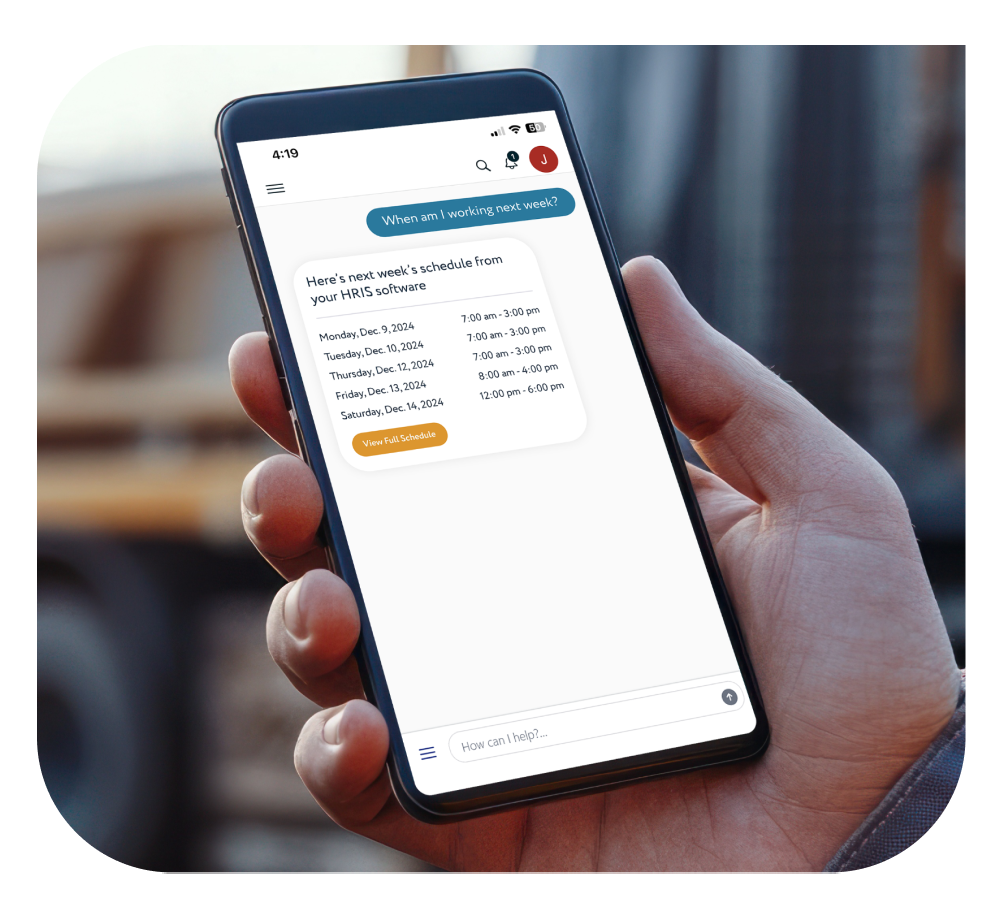How to Increase Employee Engagement
Employee engagement is connection between employees and their workplace. This bond determines the motivation your workers have for their jobs, their goals, and the corporate vision. Let’s learn more about what employee engagement means, and how you can strengthen it.


Engaged employees care about their work, their teams, and the company’s future. But that kind of connection doesn’t happen by accident. It comes from clarity, access, and support, which many organizations still struggle to deliver across all roles.
An intranet brings everything together in one place. It gives frontline and office teams equal access to the information, tools, and recognition they need to stay aligned and engaged. Let’s explore what employee engagement is and how to improve it across all workforces.
What is Employee Engagement?
Employee engagement describes whether employees are motivated and enthusiastic about their workplaces. It’s not about perks or surface-level gestures. It’s about purpose, trust, recognition, growth, and the belief that your work matters.
When people feel that connection, they speak up more often, solve problems faster, and stay longer. You see it in customer experiences, team morale, and business results. According to Gallup, business units with engaged employees saw a 23% increase in profitability. When that connection is missing, it shows.
For organizations with both frontline and desk-based roles, engagement depends on access. Do employees have what they need to do their jobs well? Do they feel included in the conversations that shape their day?
An intranet helps close that gap. It gives people one place to stay informed, connected, and supported, which builds lasting engagement.
How to Improve Employee Engagement Across All Teams
Every role has its rhythms, tools, and challenges. However, whether someone’s behind a desk or on a retail floor, they need to feel connected to the company.
An intranet helps you meet that need by giving everyone access to the information, support, and recognition that strengthens engagement. It also creates consistency across different roles, locations, and shifts, so no one feels like they’re out of the loop.
Let’s discuss actionable ways to improve employee engagement.
1. Make Communication Clear and Accessible to Everyone
People can’t engage with information they can’t find. When updates are scattered across inboxes, chat threads, or bulletin boards, employees miss the message and its meaning.
An intranet clarifies internal communication by creating a single place for it. You can post company-wide announcements, highlight urgent updates, and pin important resources where everyone can see them. It helps people focus on what matters most.
This is especially important for frontline employees. They don’t have time to track down messages or wait for someone to pass them along. A mobile-friendly intranet puts updates in their hands and shows that their time matters, too. That kind of clarity builds trust, and trust is a key part of engagement.
2. Give Every Team a Voice with Two-Way Channels
Engagement is stronger when people feel heard. Sharing updates is important, but it’s just one side of the conversation. Employees also need space to ask questions, offer ideas, and speak up when something isn’t working.
An intranet helps make that possible. With tools like comment threads, employee feedback forms, and pulse surveys, you can invite real input from every part of the organization. People can respond to updates, raise concerns, and share ideas in one place.
Frontline teams often miss these opportunities. A mobile-accessible intranet opens the door for everyone, regardless of location or shift. When employees know their voice matters, they’re more engaged and likely to stay.
3. Centralize Tools and Resources
Disjointed systems slow teams down. When employees have to dig through folders, emails, or shared drives to find a form, engagement drops. People want to focus on their work, not waste time chasing information.
An intranet gives every team a single, organized place to access what they need. From safety checklists and HR documents to training manuals and templates, everything stays clear and up to date. Role-based permissions keep it relevant, so teams only see content that applies to them.
For frontline teams, this kind of access makes a real difference. They can find answers quickly without waiting on someone else. It saves time, removes friction, and gives people the confidence to perform.
IGLOO WHITEPAPER
5 Ways to Build Frontline Performance through Culture

4. Personalize the Experience for Different Roles
No two roles are the same. A warehouse lead needs different updates than someone in retail. A technician in the field doesn’t rely on the same tools as an HR manager. If content feels off-base or irrelevant, people stop paying attention.
An intranet should reflect those differences. With role-based targeting, you can deliver the right content to the right people without clutter or confusion. It shows you understand what each team needs to do their job well.
That kind of focus builds trust. And when employees trust the tools you give them, they use them more often and more effectively.
5. Recognize Team Wins Across Frontline and Office
Recognition keeps people motivated. A quick thank-you or a team shout-out can show employees that their work matters. Consistent recognition builds confidence and encourages great work to continue.
An intranet helps you spotlight success across every team. You can celebrate milestones, highlight individual wins, and make space for peer-to-peer appreciation. It’s a simple way to keep recognition visible, not buried in a one-on-one email.
When people see their contributions acknowledged, they feel more connected to the work and the people around them. That kind of visibility supports a culture where effort is noticed and engagement grows naturally.
6. Provide Equal Access to Learning and Growth
Career growth opportunities are a key part of engagement. When people see a future with your organization, they’re more likely to stay and more likely to bring their best. However, development only drives results when everyone has access, not just those at a desk.
An intranet helps make that possible. You can host training videos, onboarding materials, how-to guides, and certification paths all in one place. Teams can find what they need, track their progress, and build skills that apply to their work today.
Flexible access matters for frontline employees. It lets them learn when and how it works for them. That kind of investment in growth builds confidence, loyalty, and long-term engagement.
7. Ensure the Intranet Works on Any Device, Anywhere
If your intranet only works at a desk, you’re cutting off a large part of your workforce. Frontline employees need the same level of access as their desked peers. That starts with a mobile experience that works anywhere, at any time.
A mobile-friendly intranet allows employees to check updates, find answers, and stay connected during work. Whether they’re starting a shift, traveling between sites, or finishing a task, the information they need is always within reach.
When access is consistent, engagement follows. People stay informed, feel connected, and know they’re part of something more significant no matter where they are.
Discover our intranet features designed to boost employee engagement company-wide.
PRODUCT OVERVIEW
Igloo Flex Mobile App

Ready to Build a More Engaged Workforce?
Engagement doesn’t improve on its own. It takes the right tools, transparent communication, and an intranet platform that works for every team, from the office to the front line. A strong intranet gives you a better way to connect people and support them at every step.
When updates are clear, recognition is visible, and resources are easy to access, people feel confident in their work and connected to the company. That’s how you build a company culture where people stay, grow, and do their best.
Ready to make that happen?
Explore our employee engagement software and see how Igloo can help your teams thrive.





